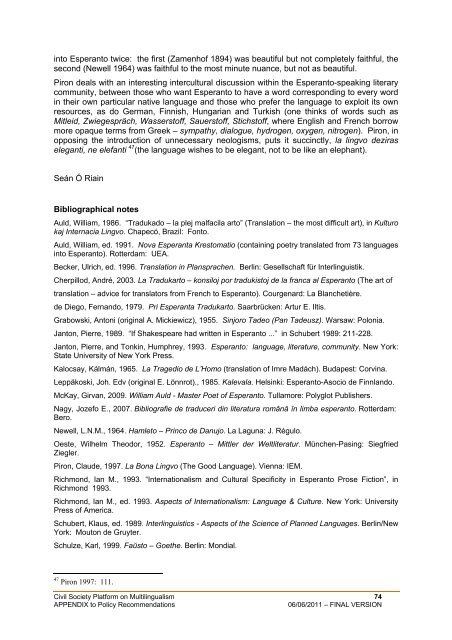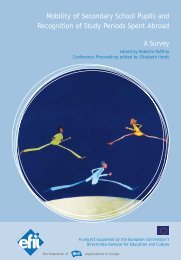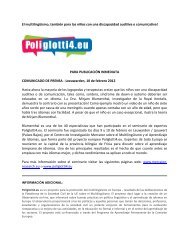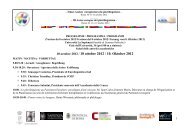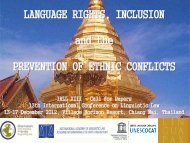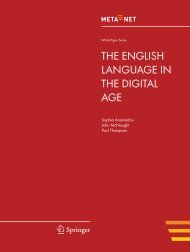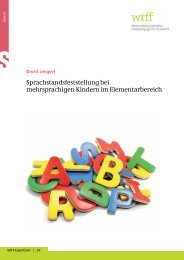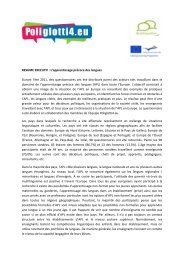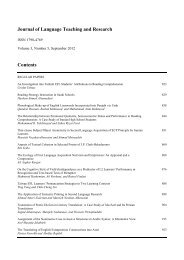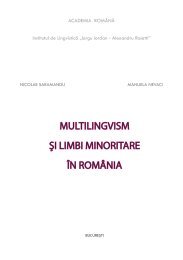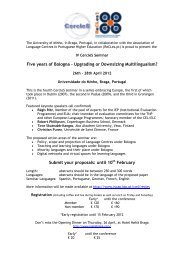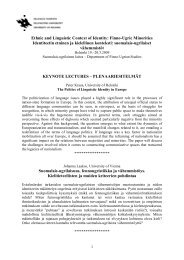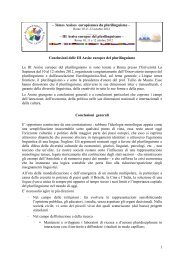FULL VERSION - European Commission - Europa
FULL VERSION - European Commission - Europa
FULL VERSION - European Commission - Europa
You also want an ePaper? Increase the reach of your titles
YUMPU automatically turns print PDFs into web optimized ePapers that Google loves.
into Esperanto twice: the first (Zamenhof 1894) was beautiful but not completely faithful, thesecond (Newell 1964) was faithful to the most minute nuance, but not as beautiful.Piron deals with an interesting intercultural discussion within the Esperanto-speaking literarycommunity, between those who want Esperanto to have a word corresponding to every wordin their own particular native language and those who prefer the language to exploit its ownresources, as do German, Finnish, Hungarian and Turkish (one thinks of words such asMitleid, Zwiegespräch, Wasserstoff, Sauerstoff, Stichstoff, where English and French borrowmore opaque terms from Greek – sympathy, dialogue, hydrogen, oxygen, nitrogen). Piron, inopposing the introduction of unnecessary neologisms, puts it succinctly, la lingvo deziraseleganti, ne elefanti 47 (the language wishes to be elegant, not to be like an elephant).Seán Ó RiainBibliographical notesAuld, William, 1986. “Tradukado – la plej malfacila arto” (Translation – the most difficult art), in Kulturokaj Internacia Lingvo. Chapecó, Brazil: Fonto.Auld, William, ed. 1991. Nova Esperanta Krestomatio (containing poetry translated from 73 languagesinto Esperanto). Rotterdam: UEA.Becker, Ulrich, ed. 1996. Translation in Plansprachen. Berlin: Gesellschaft für Interlinguistik.Cherpillod, André, 2003. La Tradukarto – konsiloj por tradukistoj de la franca al Esperanto (The art oftranslation – advice for translators from French to Esperanto). Courgenard: La Blanchetière.de Diego, Fernando, 1979. Pri Esperanta Tradukarto. Saarbrücken: Artur E. Iltis.Grabowski, Antoni (original A. Mickiewicz), 1955. Sinjoro Tadeo (Pan Tadeusz). Warsaw: Polonia.Janton, Pierre, 1989. “If Shakespeare had written in Esperanto ...” in Schubert 1989: 211-228.Janton, Pierre, and Tonkin, Humphrey, 1993. Esperanto: language, literature, community. New York:State University of New York Press.Kalocsay, Kálmán, 1965. La Tragedio de L’Homo (translation of Imre Madách). Budapest: Corvina.Leppäkoski, Joh. Edv (original E. Lönnrot)., 1985. Kalevala. Helsinki: Esperanto-Asocio de Finnlando.McKay, Girvan, 2009. William Auld - Master Poet of Esperanto. Tullamore: Polyglot Publishers.Nagy, Jozefo E., 2007. Bibliografie de traduceri din literatura română în limba esperanto. Rotterdam:Bero.Newell, L.N.M., 1964. Hamleto – Princo de Danujo. La Laguna: J. Régulo.Oeste, Wilhelm Theodor, 1952. Esperanto – Mittler der Weltliteratur. München-Pasing: SiegfriedZiegler.Piron, Claude, 1997. La Bona Lingvo (The Good Language). Vienna: IEM.Richmond, Ian M., 1993. “Internationalism and Cultural Specificity in Esperanto Prose Fiction”, inRichmond 1993.Richmond, Ian M., ed. 1993. Aspects of Internationalism: Language & Culture. New York: UniversityPress of America.Schubert, Klaus, ed. 1989. Interlinguistics - Aspects of the Science of Planned Languages. Berlin/NewYork: Mouton de Gruyter.Schulze, Karl, 1999. Faŭsto – Goethe. Berlin: Mondial.47 Piron 1997: 111.Civil Society Platform on Multilingualism 74APPENDIX to Policy Recommendations06/06/2011 – FINAL <strong>VERSION</strong>


